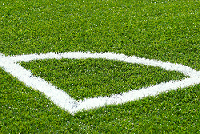Recycled Glass Products
752,000 tons of glass is now used to make recycled glass products annually in the United Kingdom. Glass is an ideal material for recycling and where it is used for new glass container manufacture it is almost infinitely recyclable. The use of recycled glass in new containers helps save energy. It helps in brick and ceramic manufacture, and it conserves raw materials, reduces energy consumption and reduces the volume of waste sent to landfill. By recycling people can reduce their Carbon Footprint.
In the United Kingdom, the waste recycling industry cannot consume all of the recycled container glass that will become available over the coming years, mainly due to the colour imbalance between that which is manufactured and that which is consumed. The UK imports much more green glass in the form of wine bottles than it uses, leading to a surplus amount for recycling.
The resulting surplus of green glass from imported bottles may be exported to producing countries or used locally in the growing diversity of secondary end uses for recycled glass products.
Secondary markets for glass recycling may include:

Glass in ceramic sanitary ware production
Glass as a flux agent in brick manufacture
Glass in Astroturf and related applications (e.g. top dressing, root zone) material or golf bunker sand
Glass as water filtration media
Glass as an abrasive
Mixed glass waste streams can also be recycled and converted into an aggregate. Mixed waste streams may be collected from materials recovery facilities or mechanical biological treatment systems. Some facilities can sort out mixed waste streams into different colours using electro-optical sorting units.
It is uncommon to see recycling containers for glass in the U.S. due to most states in the U.S. collecting all recycling together and separating it at the waste facilities to later be sold to companies that recycle glass on site.


